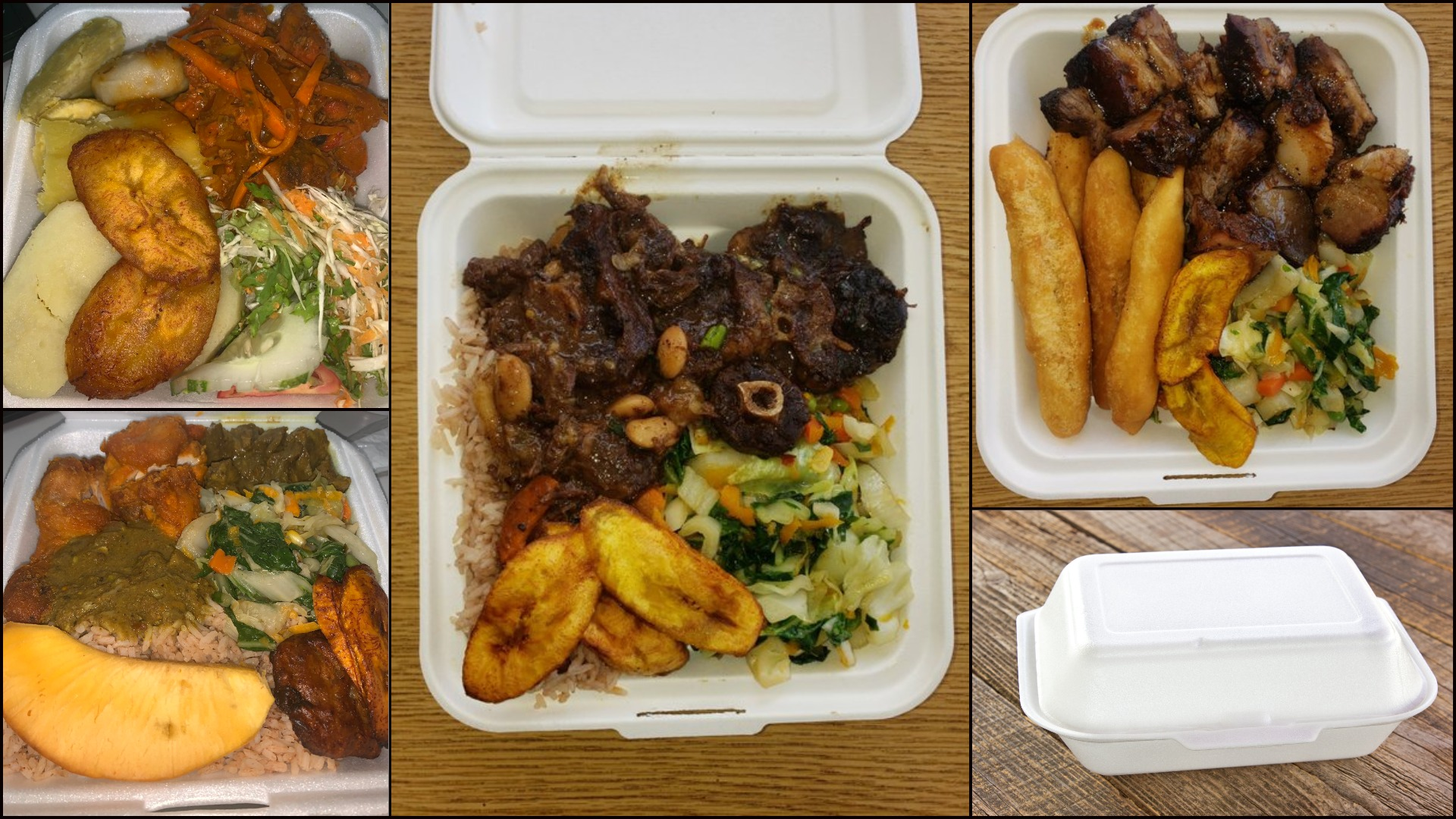Jamaican Box Food Is A Styrofoam Clamshell Of Togetherness
"Fry chicken and rice and peas alone we have!" The beginning of my love affair with Jamaican box food was sparked by that aggressive sales pitch. For over two decades now, I've been obsessed with food handed off in a Styrofoam container.
Two decades of taste. Two decades of flavor. I know you're hungry, so let's eat.
"Box food" or "box lunch" is, in the Jamaican context, a takeout meal cooked with love and served at various roadside cookshops. That love is the love of the nation, linked to Jamaica's vibe. Jamaicans are infused with this vibe (myself included), and it leaks out in all the things we are passionate about, cooking being the main craving. Box food can be found anywhere across the island in a myriad of locations, from a gritty street corner to a wooden cart to a small cooking shack or walk-in restaurant. What attracts customers and tourists from all over the world is the intoxicating scent that overpowers them and drags them closer and closer to culinary delight, promising Styrofoam parcels of solace in an often chaotic world.
Box food is a major part of Jamaica's street food scene, and like the ethnic roots of Jamaicans themselves, the cuisine is very diverse. The different types of food found within the confines of that marvelous container might be a spicy and tastebud-massaging curry mutton teamed up with buttery white rice saturated with thick and luscious gravy. Or it might be the classic crispy fry chicken whose every crunchy bite echoes a praise of hallelujah and can be accompanied with your choice of fry plantains, fry breadfruit, or many other sides. All of it is deeply linked to the Jamaican motto: "Out of many, one people." There are spots that serve up Chinese noodles with tangy sweet and sour chicken, Indian ones that fill their clamshells with curried chickpeas on a Tempur-Pedic cloud of roti, and vegetarian shops where you can order an Ital stew that sings its praises to Rastafari.
But what makes Jamaica's box food culture unique is that it includes everyone, regardless of their socioeconomic background. It's a bridge across that gap between the poor and the rich throughout the country: all are invited to the table and all feast equally from their boxes. It is not strange to see businessmen decked out in suits and ties digging into a box lunch beside an average working-class joe eating the very same thing. There are plenty of sit-down restaurants where these professionals could eat, but many seek out this more relaxed option, which allows them to pause the busy workday; meanwhile, the working class typically has a shorter break for lunch, and the food served at roadside cookshops is cheaper. But you'd never know that from all the flavor.
Starting in January 2020, a new law has changed something fundamental about how this street food looks and feels: The government has banned the sale and use of the traditional Styrofoam clamshells, meaning box food is now served up in cardboard or reusable plastic takeout containers. The ban was a much-needed measure, as we are all making an effort to reduce the damage to a world that has given us so much. However, it's an adjustment—the changing of an instrument that has allowed the orchestra of street cuisine to play its tune so beautifully. And even though the quality of the food itself hasn't changed, eating box food out of these new boxes just doesn't slap as hard. Nostalgia is my drug of choice.
Still, we will keep up the tradition, and these street food establishments will keep serving up their meals with love. It's the soul of the Jamaican people. Sometimes a warm meal clasped inside a Styrofoam/plastic/cardboard box is the best and only way of connecting the masses.
